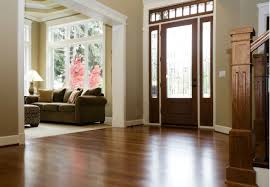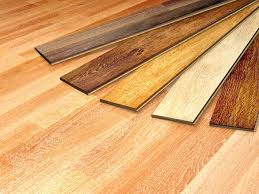Choose Engineered Hardwood Flooring
Flooring plays a role in how your home feels because it can completely transform the space. Many people choose hardwood floors to bring a natural and elegant look into their homes. Solid hardwood is a traditional option, but there is also another choice to consider — engineered hardwood.
What Is Engineered Hardwood Flooring?
Engineered hardwood is made out of layers of wood compressed together in a criss-cross construction. These layers are a thin strip of real durable wood species on top of high-grade plywood.
One of engineered hardwood’s greatest strengths is its ability to stand up to humidity and moisture. The plywood is stable enough that it won’t flex and bend in the presence of moisture. Its durability means it won’t contract and expand with the changing seasons, so the floor won’t warp or cup over time. As a homeowner, you can enjoy hardwood without moisture concerns.
Because of this construction, you have more freedom with engineered hardwood. This flooring can go in rooms that solid hardwood could not, such as a below-grade basement, the kitchen or bathrooms, as long as these spaces do not have major problems with moisture.
Perhaps the best feature is engineered hardwood’s price tag. In many cases, engineered hardwood is more cost-effective than solid hardwood. It is an affordable wood flooring option for a large space, such as your living room.

Engineered Hardwood
Pros
Engineered hardwood flooring offers great durability, much like solid hardwood flooring. Less expensive options with fewer layers should last between 20 and 40 years, and higher-end varieties with more layers can last from 40 to 80 years with proper maintenance. Another major pro of engineered hardwood is that its layered construction makes it relatively resistant to moisture damage (certainly more so than solid hardwood). This makes engineered hardwood a suitable flooring material for almost any room in your home, including those that are below grade. And while it can be nailed down to a subflooring, like solid hardwood, engineered hardwood can also be installed as a “floating” floor, where the planks are glued or snapped together and not affixed to the surface below. This allows engineered hardwood to be installed atop existing flooring materials, such as linoleum, vinyl, or even tile, and also allows for installation on top of concrete. Engineered hardwood is also more environmentally friendly than solid hardwood. Due to the fact that it uses less hardwood overall in its construction, it requires fewer trees be cut down for manufacturing. Given its good durability and wide market appeal, engineered hardwood is a great investment in your home.
Cons
Although engineered hardwood can be sanded and refinished, this can only be done a handful of times at most because of the limited thickness of the hardwood veneer. So, although you can expect a long lifespan out of your engineered hardwood, it doesn’t quite have the longevity of solid planks. For this reason, major damage to part of the floor may require replacing individual planks rather than resurfacing the entire floor. This is really the only downside of engineered hardwood flooring, and it can be mitigated to a great extent with some basic care and maintenance.

Types of Engineered Hardwood Floors
Engineered hardwood comes in a wide variety of beautiful wood selections, such as:
- Hickory
- Birch
- Maple
- Red oak
- White oak
- Walnut
- Cherry
- Brazillian cherry
- Bamboo
- And more
Each of these wood species will bring a different look to your home. Our technician will work with you to decide which engineered wood best suits your needs.

Should you float, nail, staple, or glue your engineered hardwood?
There are different factors that come into play when making this decision. It depends on the type of surface over which you are installing the floor. It also depends on the environment where you live. Is this a retrofit or new construction?
You should install a floating engineered hardwood when you need flexibility. Installing a floating engineered hardwood floor works well at any grade level and over most types of subfloor surfaces. A floating engineered wood flooring installation on concrete can be an excellent choice if your subfloor is below grade. It’s also a great option if you choose to incorporate a radiant heat system.* (Don’t forget the vapor retarder!)
In contrast, gluing hardwood to concrete provides you with a very permanent solution. Gluing works well when you are installing engineered hardwood over a concrete subfloor, but be sure you clearly understand the manufacturer’s application instructions before you glue that floor.
Plan to nail down the engineered hardwood flooring when you have a wood subfloor. As long as you use the correct pneumatic nail gun, this technique provides the installer with a simple and controlled approach to the installation.
Hardwood Floor Maintenance
For most hardwoods, the maintenance is the same regardless of size, finish, or wood species. The floor should be swept or vacuumed without a beater bar as needed and damp mopped with a cleanser made for wood floors. If necessary, throw rugs can be used to prevent scratches or scuffs. If a surface finish is used, reapplication and buffing may be required every five to ten years.
Clean spills immediately to avoid moisture damage. Don’t use steam mops on hardwood floors since they can cause irreversible damage. Protect the floor by using furniture on the legs of any movable furniture pieces like couches.